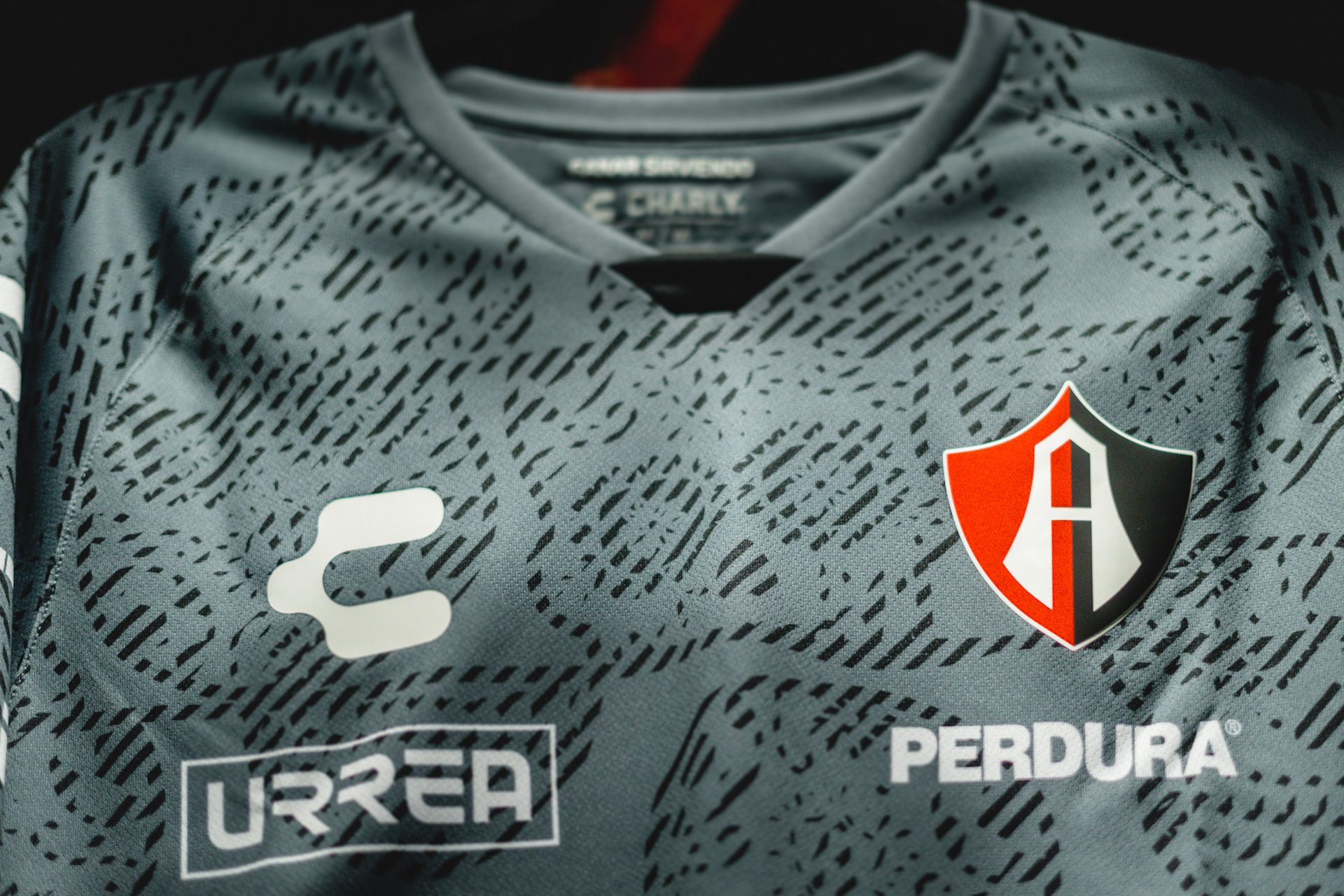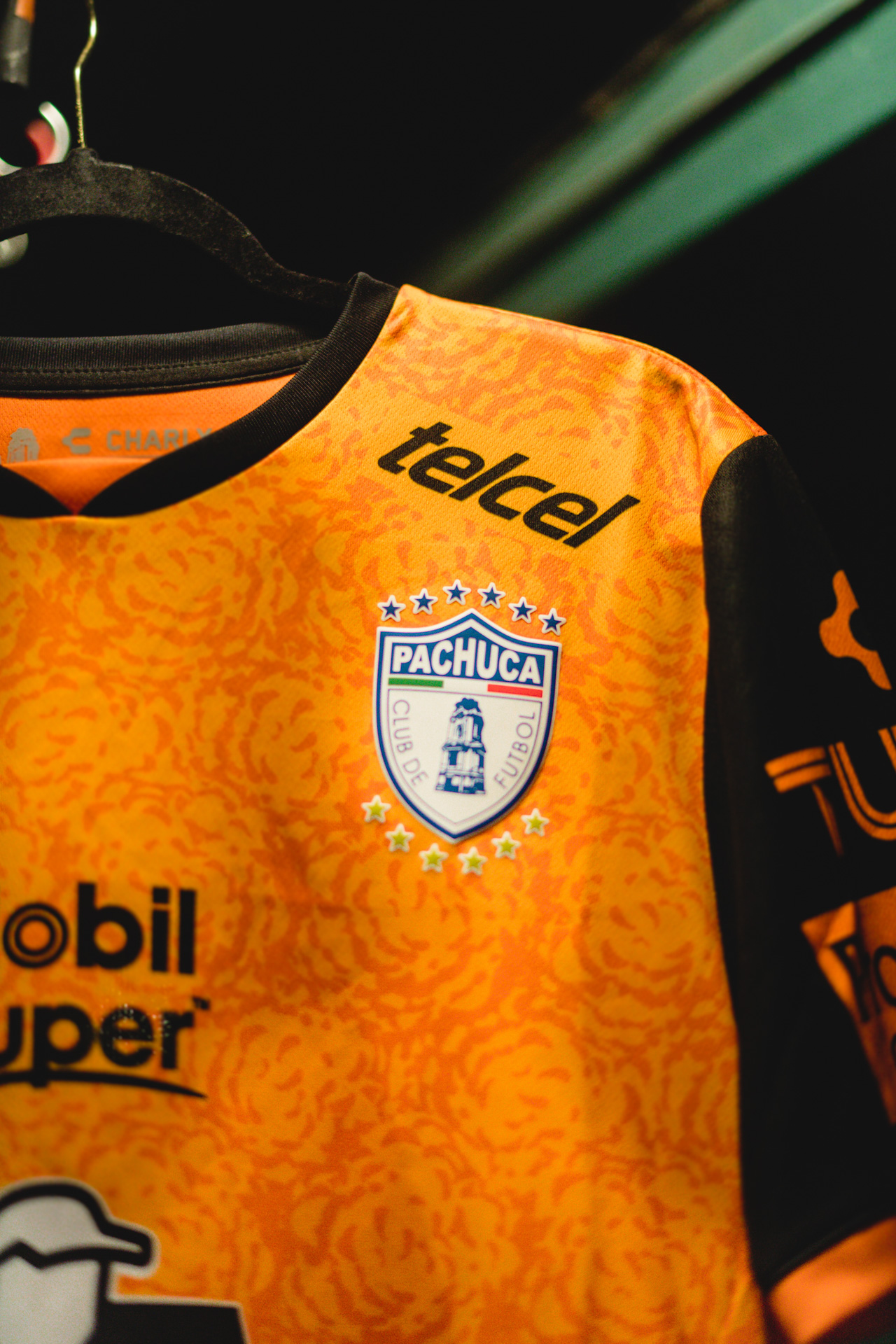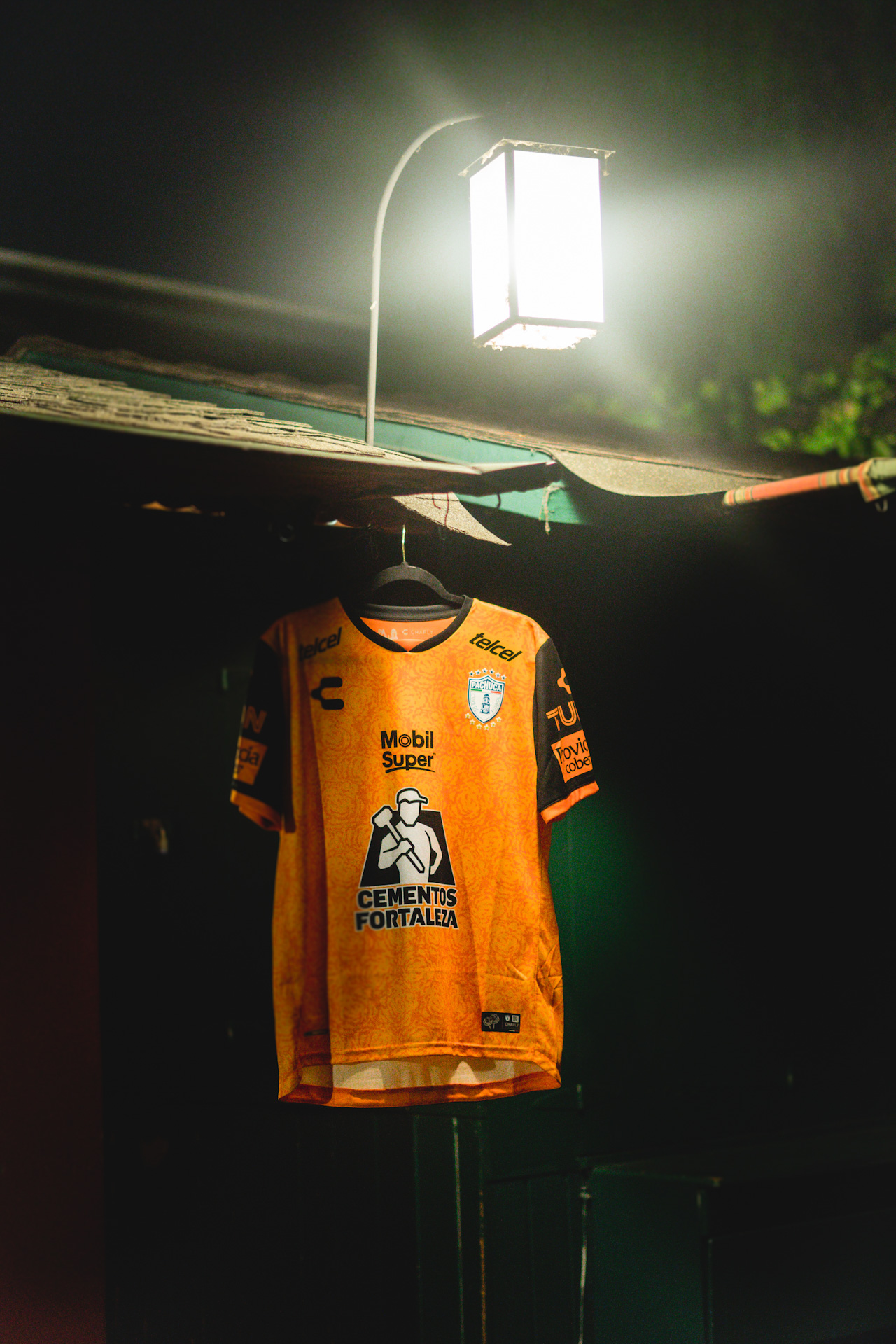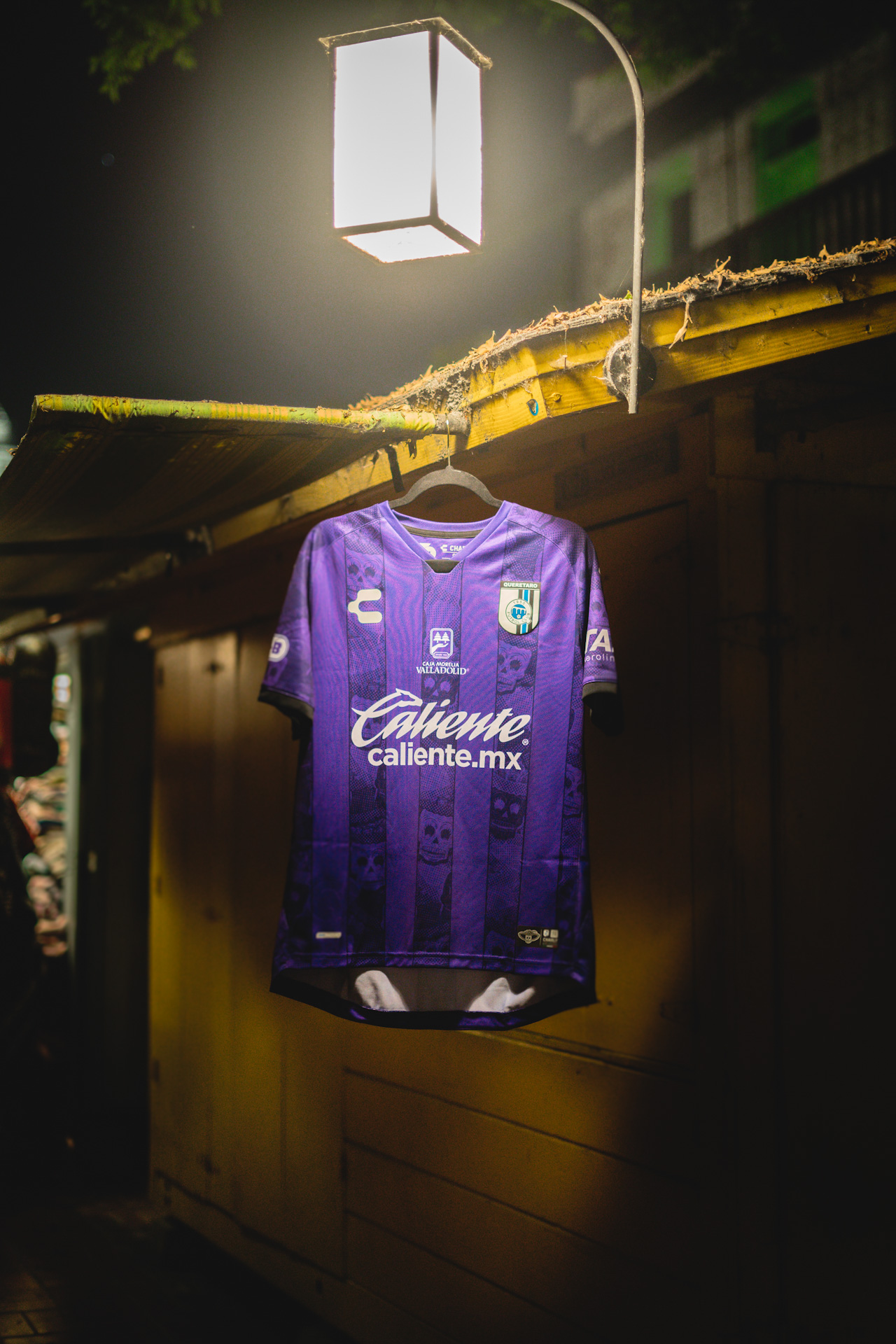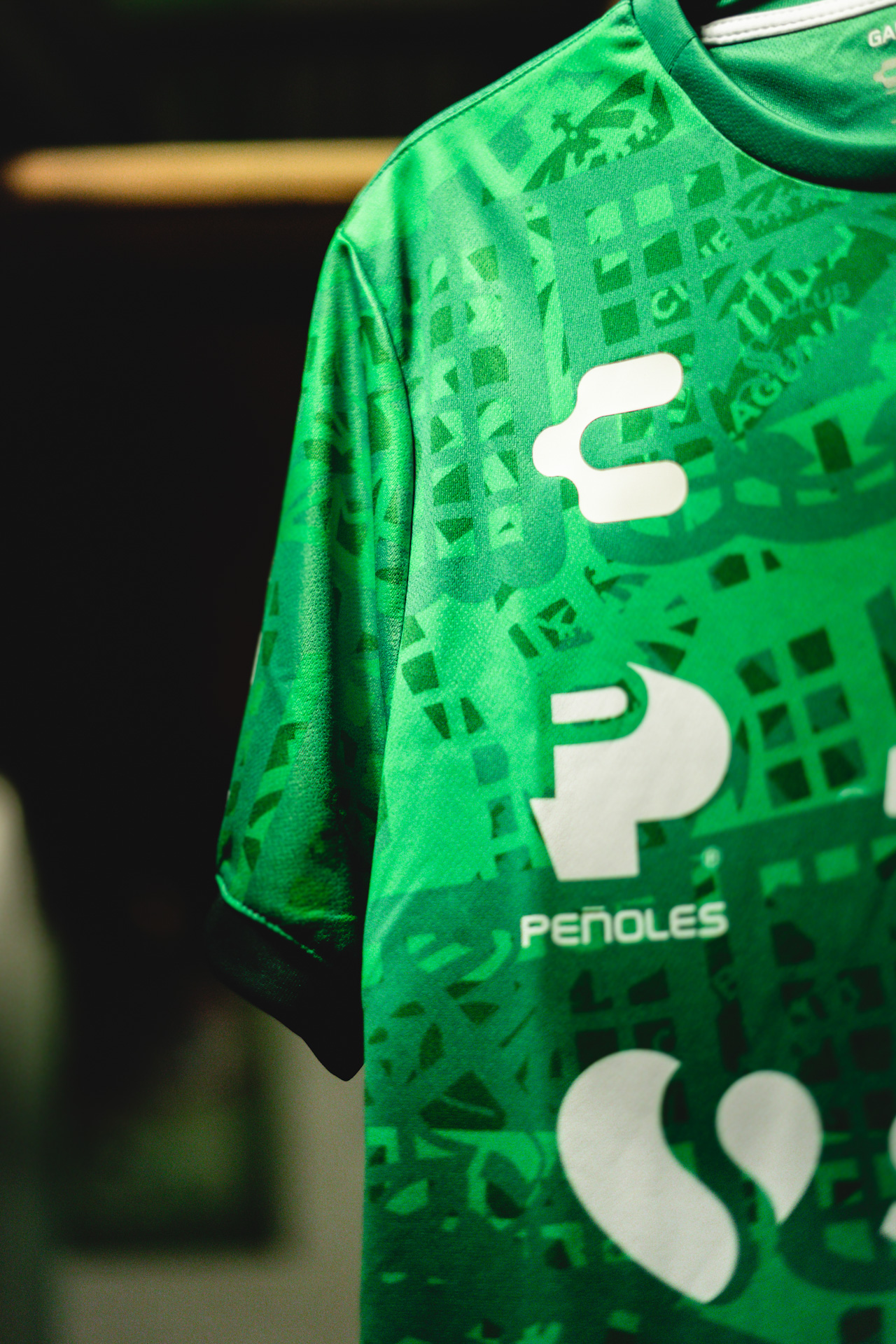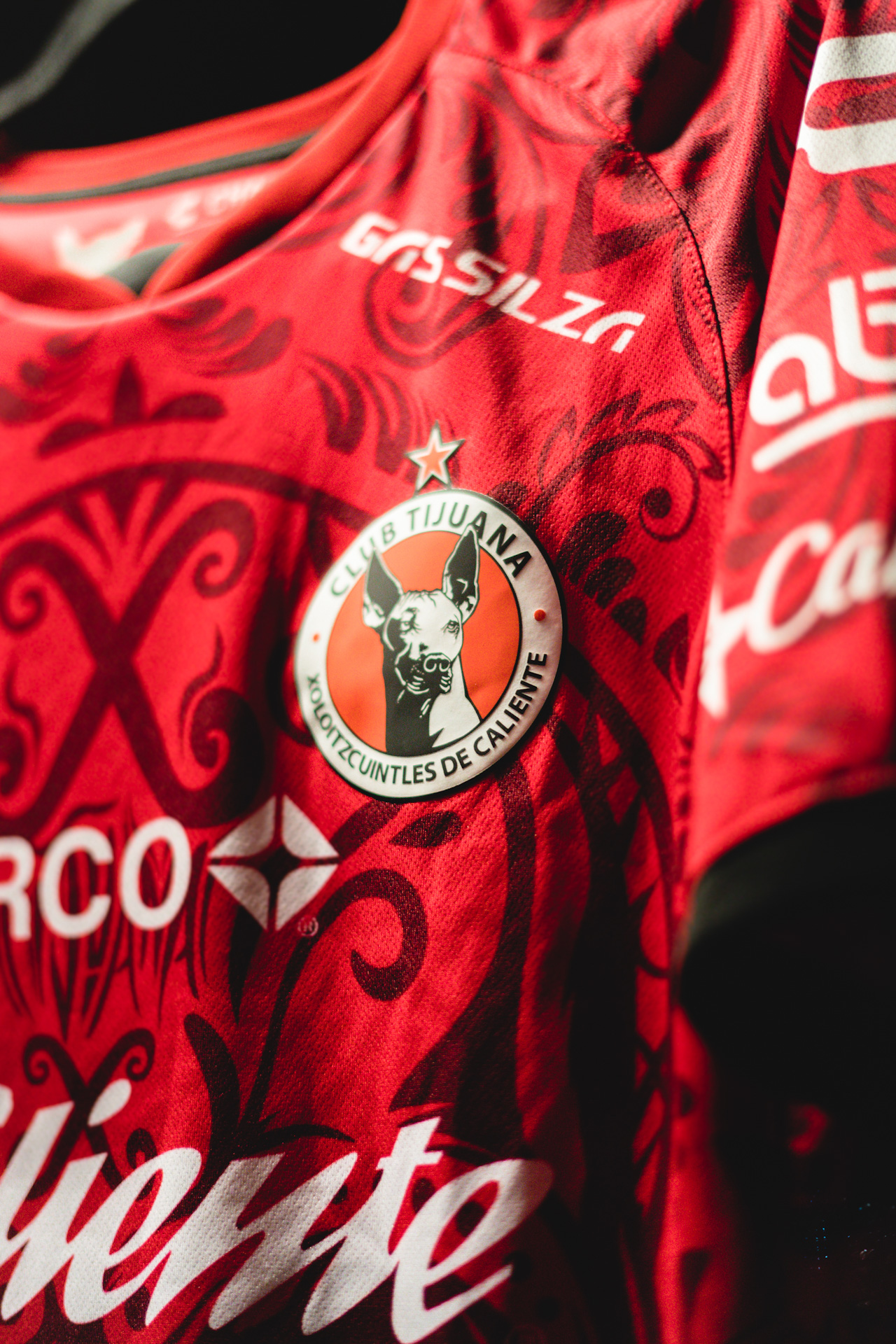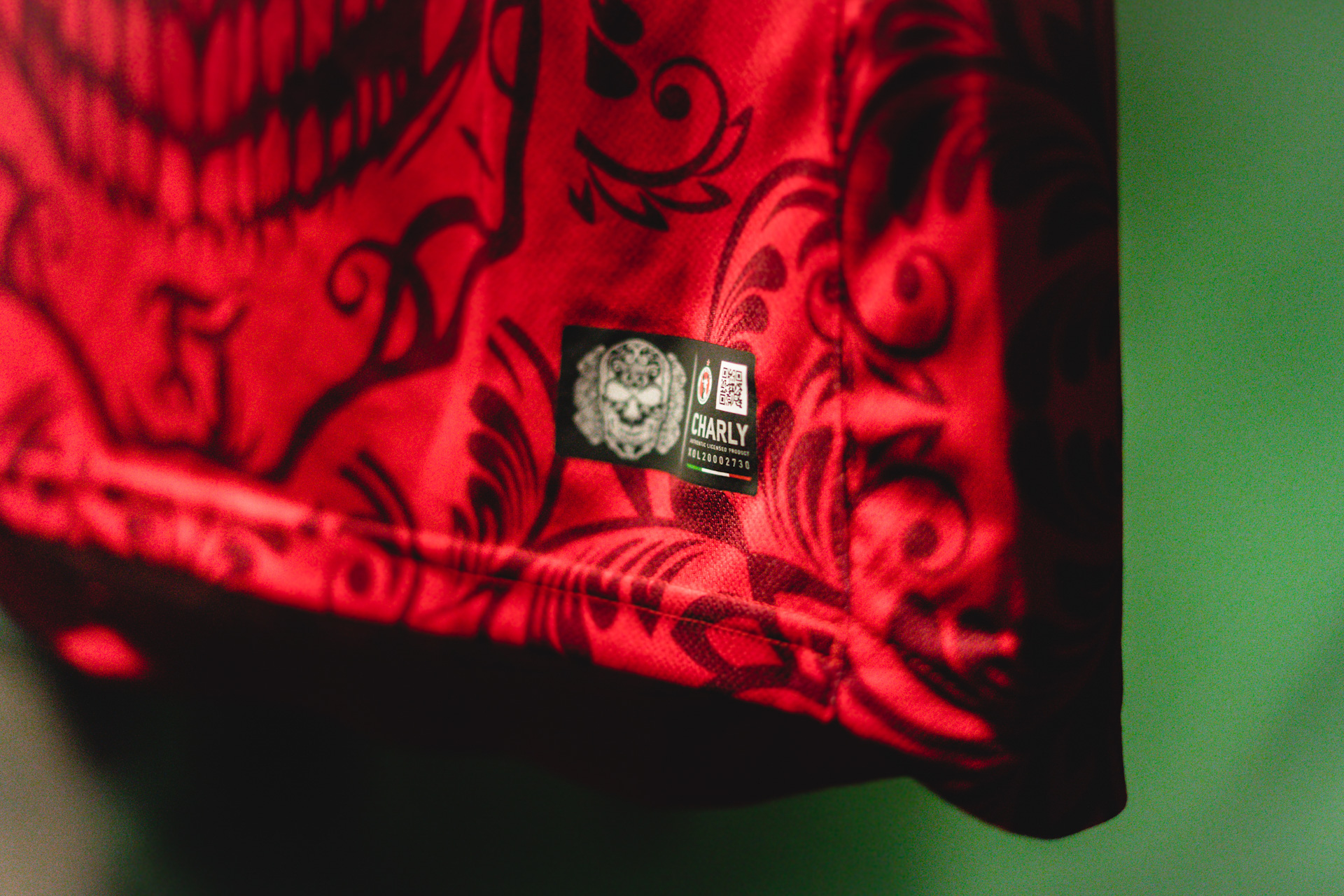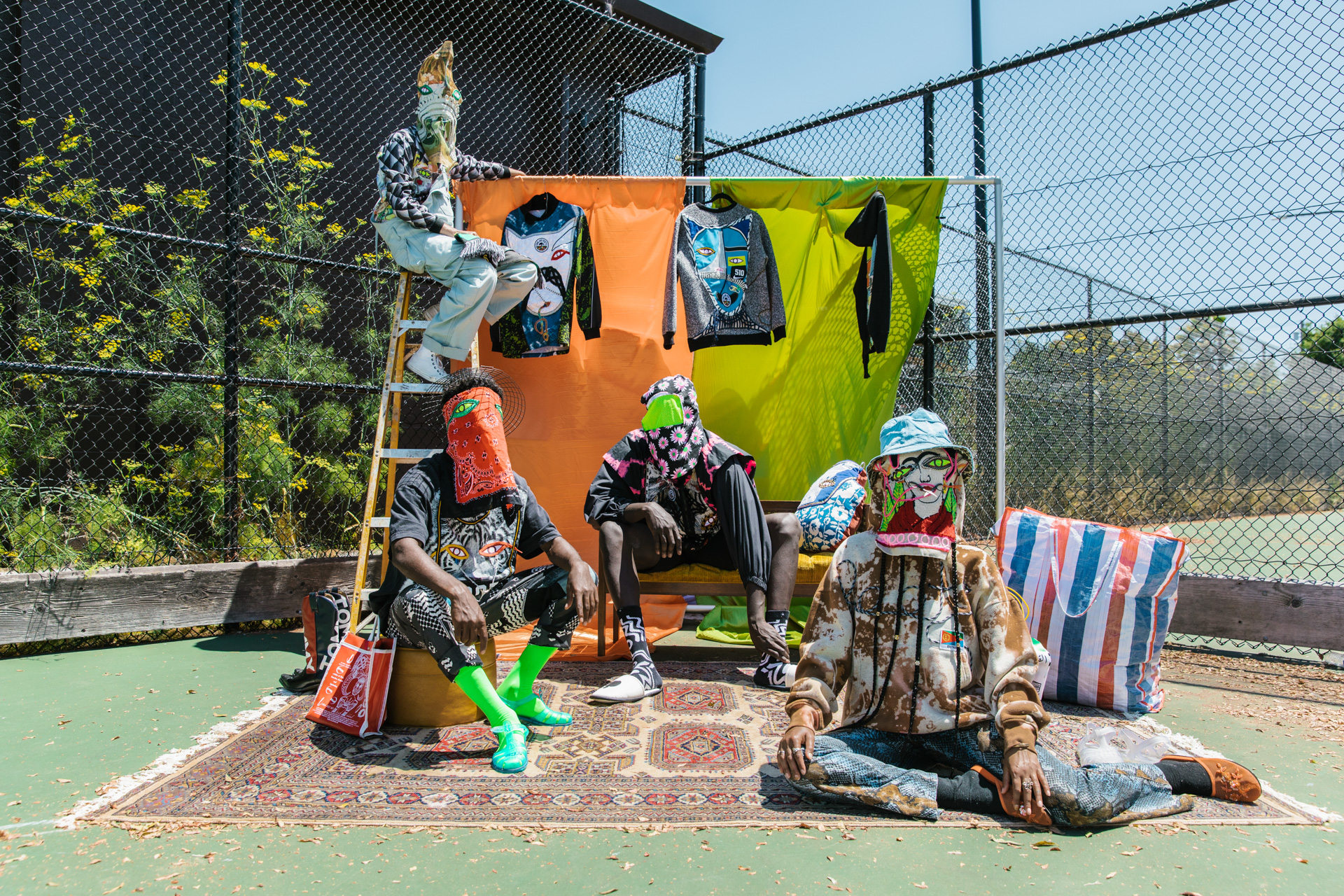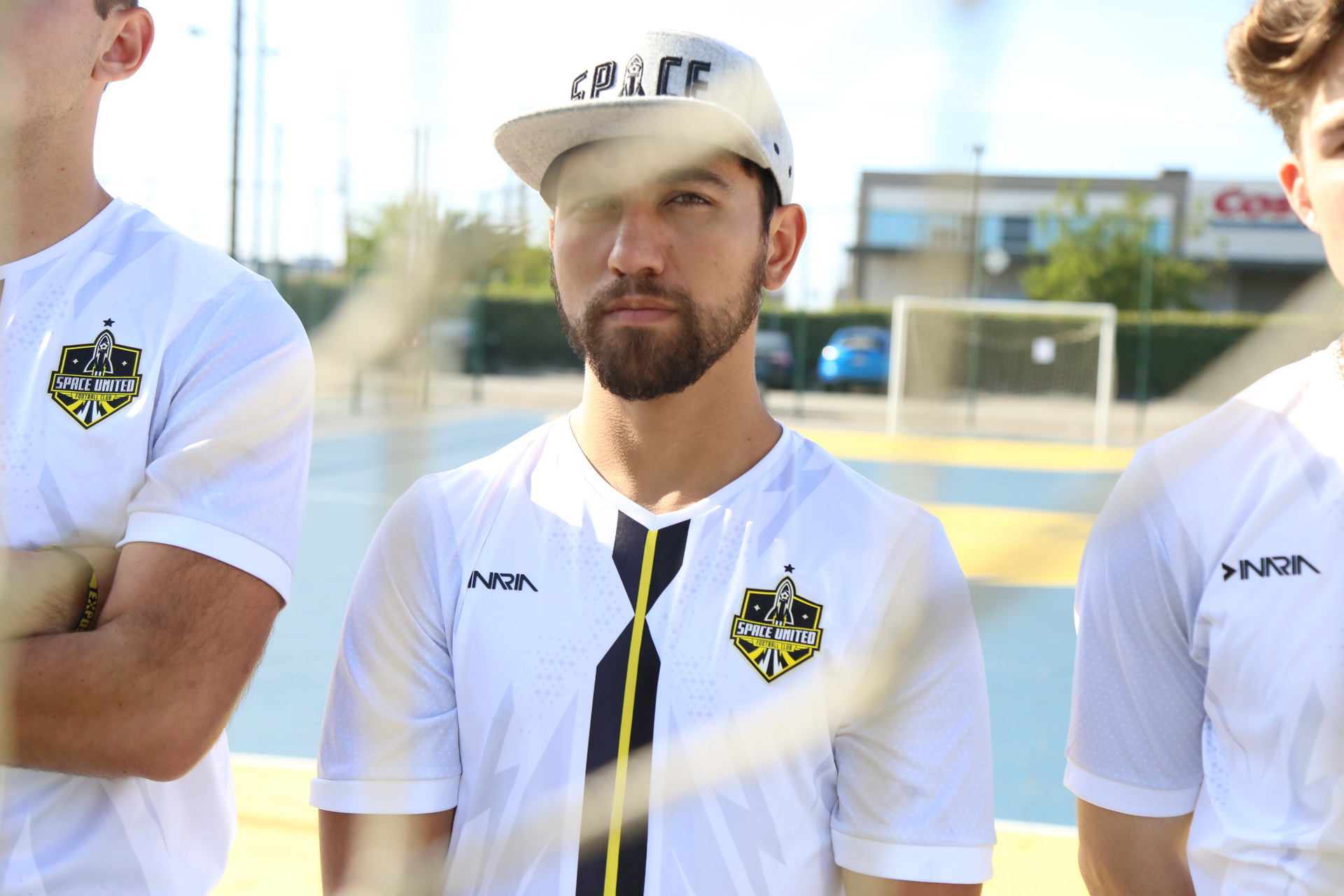CHARLY CONENCTS TO THEIR MEXICAN HERITAGE WITH THE “DAY OF THE DEAD” KIT COLLECTION

Charly connecting to Mexican Heritage via the “Day of the Dead”
In recent years we have seen not only an influx of clubs wearing and releasing “third kits”, but also the creativity and storytelling that accompanies these jerseys. Third kits have been a way to stretch the identity of the club by introducing new colors, designs and creativity that oftentimes isn’t seen in home and away jerseys.
This year, one of the best offerings of third kits has to go to Charly. As we mentioned in a previous story, Charly has five Liga MX teams that they are kit partners with, and for this year, they released a collection of third kits inspired by Dia de Los Muertos. While each team has a jersey design inspired by Dia de Los Muertos, the story and individuality of design for each team is as unique as the clubs themselves.
Atlas: “Candy Skulls”. Candy Skulls reflect the fact that death is a part of life, and gives the idea that death should be viewed as something “sweet” and not so tragic. Also, they are offerings to the dead, just like Santa Claus cookies left by the Christmas tree.
Pachuca: “Flor de Cempasúchil”. The Cempasuchil flower is a traditional ornament placed on the altars. Its orange color is said to be the bright light that guides the dead back to the land of the living.
Querétaro: “Catrinas”. The “Catrinas” are dead ladies, elegantly dressed, as if prepared for an elegant party, in this case, the celebration of death. They have become icons of the Día de Muertos tradition in Mexico. People typically dress up as catrinas during the holiday.
Santos: ”Papel Picado”. “Papel picado” is a string of colorful papers that hangs above the altar as decoration for the festivity, and are also meant to catch the souls of the dead. Each color represents something different.
Xolos: “Death”. The jersey represents death itself because of the connection between the team and death rituals. According to Aztec traditions, the Xoloitzcuintle accompanies the dead on their journey to “Mictlán”, or the land of the dead. Mictlán is also the nickname of Estadio Caliente.
I’m a sucker for a great jersey design, especially one that has such deep meaning behind the design. Each of these Dia de Los Muertos jerseys from Charly delivers on design, story and overall execution. The jerseys are currently available on Charly’s website.
www.charly.com/en/us/football/jerseys/third-20-21-jerseys/
Q: I know this project was a long time in the making. How did it all come about?
A: The whole idea was for me to create three or four one-of-a-kind pieces and put them on the website like, “Hey, here it is, go Oakland Roots!” [Roots co-founder] Edreece [Arghandiwal] had been talking to me for a year and we were just not able to connect with the whole COVID situation, so I had some time to invest into this. I picked six or seven pieces I wanted to mess around with, reconstruct, and add my own twist to them and see what came out. And then suddenly this shit went bananas. It went to another universe. Ideas started coming to me of making a film to go along with the collaboration. So I texted my friend Calvin and was like, “Let’s make a little film with his clothes based on this story about humanity and hope, based on courage, based on representing the people that are oppressed around the world and showing strength through this film and how to reach freedom through faith and through a certain spiritual fight and togetherness.”
Q: Your work is centered around humanity and the spiritual journey we all take to get to our destination. I know your story has had difficult twists and turns. Can you talk about the parallels between your life and soccer and how constant movement has played a role in both?
A: I was a kid from the Yugoslavian war, I went to eight, nine different high schools as a refugee in Croatia, in Germany, and then in the United States. Constant movement was very challenging, but at the same time it taught me how to adapt, how to lead, follow and listen, and develop street smarts while absorbing new cultures. Adding from different cultures to my own helped me evolve. Growing up without a father and being out there in the streets, feeling like the “other” in all these countries — soccer became a tool where I was able to prove myself. It saved my life. It gave me a pass with the community, where I could settle in with some credibility, so I was able to develop friendships and be accepted.
I was a very feisty kid that expressed everything I was feeling and laid things out clearly. If I’m on the field and not happy, I’m going to show you I’m not happy. If I’m happy, I’m going to show you I’m happy. When people are passionate they’re going to show their vulnerabilities. Through soccer, I was able to show the good and the bad and I was able to reflect on it, like, “Wow, I like this part, but I don’t like this part about myself.”
So there were parallels between soccer and life because I was constantly evaluating and questioning things. Why would somebody kill my best friend? Why is my father an alcoholic? Why is my family not happy? Why is my mom really strong even though she’s going through hard times? I was able to use soccer, and street art, as something to lean on.
Q: Obviously soccer was instrumental as a coping mechanism and social bridge, but what role did art play? Was it similar in that regard?
A: I started doing graffiti in Germany with a friend I could barely speak to. When I immigrated to Germany in sixth grade I didn’t speak the language. There was this kid, Daniel, who sat at the same table as me and I didn’t know how to say shit for three months. But Daniel was really smart, and he was doing graffiti and drawing next me to me every day. One day I was just like “What the hell is this? and he was like, “Just do your name.” And that was my introduction to friendship — the classmate to my left.
He ended up teaching me how to draw lines and how to do shading. Before I started writing German or even speaking it, I was communicating with this guy through art, which is a human expression that goes back ages and ages. So for me, language is more than just speaking. It’s visual. Feeling, smelling, and the frequency of people around me.
Q: It must have been challenging as a kid having to keep moving and adapting to these new cultures given you weren’t in any given place for very long.
A: I was in a city called Chattanooga (in Tennessee). It was all rednecks and black kids in that population. I was like, “Holy shit. I have to adapt quick.” I was the white boy, but I’m like, “Why am I the white one? I’m actually Bosnian.” I didn’t get the whole thing. But they embraced me because I was really good at sports. I would go and endeavor in P.E. and when we had these sports competitions, I was out there competing and suddenly they said hi to me in the cafeteria, and then I started to develop friendships. Sports and art are a thread to my existence, that’s how I would put it.
Q: Your work is obviously very tactile. Why do you think it’s so important to be able to work with our hands and make stuff during a time where seemingly everything has gone digital?
A: We’re all in this digital wall, in the fucking cloud — which is great. I think there’s amazing things we need our computer friends for, like the internet, but also finding that yin and yang and getting dirty is important. Like when I saw my mom as a kid making bread and her hands were in that dough and moving, and then I tried it, I was like, “Holy shit.” There’s a certain connection that you’re having by using hands and feeling. Your spirit connects immediately.
It’s like a key that opens certain doors. So when you’re doing dye, or when you’re working with the thread, there’s a certain Zen. It’s a key that unlocks doors within ourselves. It’s very important that we go back and rebalance using our hands, doing art that is more tactile because it connects to the true essence of your spirit.
Q: It feels like for myself, and many creatives I’ve talked to, the pandemic really allowed us to recalibrate a bit, which is tough considering all the tragedy, but it almost feels like a reset of sorts. Has your experience been similar?
A: Yeah. I mean, it’s a machine. We’re living in a machine that’s been really well oiled. The way our society is — especially in the last 40 years with all this technology — we’re moving fast. The new thing comes, boom, the next thing comes, new thing, next thing, it’s so fast. We’re caught in this system and have been trained to think this is the only way to be happy. COVID… really bad. I mean, how many people have died? It’s really sad to think about it, but as you said, there’s this silver lining that people talk about. For me, I feel like it’s almost like somebody put a foot in that machine and it just stopped. It gave people enough time to get out of the machine, walk out and then look at the world from other perspectives and be like, “Holy shit, there’s these other things out there. There are other doors to choose from that can make me happy.” “Wow they’re actually treating us like that, man, fuck that. Or they’re treating other people like that, man, fuck that.” I hope we continue to evolve and find other ways to have a lifestyle that creates a healthy living with love and compassion and building things that aren’t killing ourselves, our community, and our planet.
Q: Speaking of doors, can you talk a little bit about the ‘home away from home’ concept you chose for the HUMAN.ET visuals?
A: I wanted to shoot on concrete because I grew up playing street football, where you chip over somebody’s head and you pass it with the back heel and people are going to talk about it for the next two weeks, and you’re getting credibility from the older kid that you look up to. It was like reaching the highest of the high. That feeling of losing myself on the street felt like a home away from home, because that’s where I was able to be me and escape from thinking of war or all the other issues I was dealing with at the time — I was just able to be free. When I do things, I go by energy. I like to present a vision, but I also want other people to add to it and give them the freedom to just be playful. Going into the essence of when you’re a kid and just playing around and throwing ideas out there. When we were on the set, I was very conscious of creating an environment and energy that felt free. I wanted everyone to feel at home on that shoot. There’s beauty in collaboration, but it starts with you. Being open, letting go of your ego a bit, and being present. That component is very important. Being present and being open. That’s where you’re creating something that you will never be able to create on your own or evolve into something else. That same level of collaboration exists on the football pitch. Yes, on your own you can be, but without your teammates, you’ll never create anything great.
Q: You definitely had huge support from Roots when it came to this project. Not many, if any, soccer clubs have put an emphasis like this on the arts, especially when it comes to fashion. How much does having this platform to tell the story of HUMAN.ET mean to you?
A: I’ve traveled to many different countries and have been in many different neighborhoods. I’ve felt the worst of humanity, but also the best of humanity. Like when you’re in the middle of a war, you’re like, “This is the worst of what humanity has to offer.” But at the same time, I found the best of humanity. How somebody that didn’t know me was able to give me a hand and saved my life and helped me integrate and move on and I’m just glad that Edreece is giving me this platform to share these experiences.
Q: It’s like all these experiences and pieces of your life that wouldn’t really be considered traditional fits have actually woven themselves into a unique and beautifully diverse sort of tapestry.
A: It’s a patchwork of my experiences — everything that I went through in my 40 years of life. Every human experience and the feelings of finding common ground with people from all different places and realizing we all share similar experiences and understand each other. I understood in this HUMAN.ET collaboration with Oakland Roots my whole life was going to be poured into that thread that connects my journey in this current life, but there’s also a component that I don’t understand and I love it. It’s a body of work and like really tasteful food, you can savor all the ingredients and taste the different spices. Much like that, I hope people will feel, consume, and enjoy the work that we’ve created.
For details on the release of the collection, head over to the Oakland Roots website and sign up for their newsletter.

